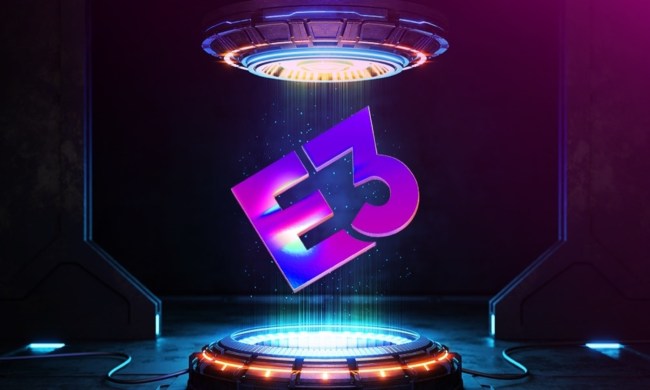The series has been steadily growing its Western following with each release, and as the first entry in the series to have a simultaneous worldwide release (as opposed to first coming out in Japan), Monster Hunter World aims to take its popularity to a whole new level. We recently watched a live, commentated demonstration on the E3 show floor, with one of the game’s programmers on the hunt.
We’re gonna need a bigger platform
Monster Hunter Worlds also marks a major return to consoles after primarily residing on mobile platforms for the last decade. Although the series originated on PlayStation 2 and has had iterations on Wii, Wii U, and PS3, these have generally been remasters of handheld versions, and often have not seen a release outside of Japan. Western audiences have primarily come to know the franchise on 3DS. While being on handheld platforms has hardly meant sacrificing depth, focusing the development of Monster Hunter Worlds solely on PS4, Xbox One, and PC allows for an increase of scope for the famously deep games.
Apart from the expected visual upgrade, that extra hardware oomph is being put to use in making larger and more systemically complicated environments. “Living, breathing ecosystems” was the phrase used by developers to describe this new approach to design, and you’ll agree that it’s entirely apt once you’ve seen the game in action. Reminiscent of Horizon Zero Dawn, the environments really fewl like living places that exist independently of the player. They’re layered with interlocking parts that could be exploited to the hunter’s advantage.
These larger and more dynamic maps, are probably the defining feature that separates Monster Hunter Worlds from previous series entries.
For instance, our hunter ran past a group of grazing, herbivorous dinosaurs in a stream early on. Out from the shrubbery leapt what looked like a giant iguana, which swallowed one of the grazers whole, like a python, as the others scattered. He then followed it as it dragged its distended belly upstream and regurgitated some of its kill for a few babies that came scampering out of the shadows. It was a neat series of events, and totally unscripted.
That was a more incidental interaction, but these sorts of organic interplays can also be used to the player’s advantage. Our hunter’s main quarry was a giant T. Rex-type monster, but at one point he led it into the raised nest of a giant flying beast that promptly attacked it in a Ray Harryhausen-style clash of titans. There was also a moment when the target was temporarily stunned on the ground, and several nearby, smaller dinosaurs took advantage of the opening to run in and nip at it.
Again, this wasn’t the product of a scripted set piece, and the hunter didn’t even seem to plan on it happening –it was just a byproduct of the environment being populated by free-acting, intelligent agents. These larger and more dynamic maps, which layer more immersion on top of an already rich base experience, are probably the defining feature that separates Monster Hunter Worlds from previous series entries.
Jaegermeisters
The core Monster Hunter experience, however, remains unscathed. Despite speculation to the contrary, Monster Hunter Worlds is not an open-world game — the action still took place in a discrete level under a time limit — but its environments are substantially larger than in previous entries.
All 14 series weapons return, each of which possesses its own distinct style, rhythm, and tactics. The hunter in our demo primarily wielded the great sword, which had an almost Dark Souls-like rhythm of dodging and swooping in to find openings and land devastating blows. Later on, he popped back to camp and switched to the heavy bowgun, which is like a bolt-firing minigun. He used a variety of ammo types, such as stunning prey with a delayed explosion, or a devastatingly powerful blast — but only at very close range. He also made good tactical use of clothing, sometimes throwing on a ghillie suit for stealth, or a heavy cloak for greater stability when trying to land a point-blank shot with the bowgun.

All this tactical richness is compounded by the addition of multiplayer. Where previous titles in the series partitioned multiplayer and single-player missions from one another, Worlds will be the first to allow for seamless multiplayer. If someone is having a hard time with a particular hunt, they can send up a signal that they’re looking for help and be joined by either friends or strangers to take down the beast together. Cooperative play has long been a central pillar of the Monster Hunter franchise, but Worlds promises to make it more seamless than ever before.
The Monster Hunter franchise has been steadily growing in global popularity, but Monster Hunter Worlds could take it to a whole new level by bringing in mainstream console gamers. We’re excited to hunt monsters from our couch again on PS4 and Xbox One in early 2018. It will head to PC soon after.


